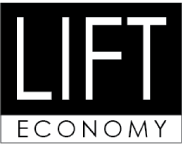Through working with dozens of social enterprises and our own companies we’ve developed a checklist of 65 business design elements that we would advocate are essential for sustainable growth and regional replication of any organization. You can preview the elements listed below organized by business design area. Part of work is to help organizations assess where they are relative to these necessary elements for growth and relative to other social enterprises. We invite social enterprises to a free assessment. It takes about one hour and we typically conduct these assessments via video conferencing. Upon completion of the assessment you will receive your scoring rank on each element, a comparison of your scoring and the scores of all other social enterprises we’ve assessed (presented only in aggregate – your specific score and information will always be held in confidence) and a brief set of recommendations from LIFT on what we see as your top priorities for evolving your business design. Contact us to schedule a free assessment session today.
The following list is a checklist used internally by LIFT Business Design to assess and then coach/design social enterprises through sustainable growth. The list, “as is,” may include jargon that might only make sense to LIFT partners.
⬰ 1 year Goals – Measurable over time (3-6 goals, ranked, with milestones for achievement)
⬰ 3 year Goals – Measurable over time (3-6 goals, ranked, with milestones for achievement)
⬰ Mission statement – the expression of the soul of your business
⬰ Reference points – successful organizations that you are growing to be like, but different
⬰ Exit/Liquidity strategy and timeframe (also includes exit strategy for founder(s))
⬰ Vision accountability – board or advisors, selected and assembled on regular periodicity
⬰ Revisioning schedule (seasonal , biannual or annual retreat planned and scheduled)
⬰ Culture defining statement
⬰ 3 Core values
⬰ Core values definition
⬰ Sub values for each core values
⬰ Behaviors and habits for each core value
⬰ System for capturing additional behaviors and habits for each core value
⬰ System for recognizing and appreciating values-aligned behaviors
⬰ Culture lead for accountability assigned
⬰ Cultural investments planned
⬰ System to measure ROI from culture investments
⬰ Strategic recruiting system documented with feedback loops for refinement
⬰ Team strategy documented – who needs to be hired for the next 2-3 years
⬰ Team evaluation plan in place
⬰ Cultural orientation and training plan documented
Marketing
⬰ Marketing goals defined (3-6 goals, ranked, with milestones for achievement)
⬰ Market research (needs, desires, values, options)
⬰ Market segmentation and target markets defined (including list of assumptions and list of potentially underserved markets)
⬰ Total addressable market measured (bottom up or top down)
⬰ Product/service design in alignment with vision, culture, market and industry
⬰ Evidence of product/service differentiation
⬰ Core value proposition (aka Brand Statement)
⬰ Core values proposition (unique social/environmental benefit customers create/share by purchasing your good or service)
⬰ Key factual and emotional messages designed (3-5 lasting brand messages that differentiate your product/service – include 1 “renegade or underdog message”)
⬰ Brand voice (document the tone and personality of your organization)
⬰ Identity (name, logo, tagline all in alignment with market, vision, culture, brand and value proposition)
⬰ Outreach approaches and marketing tactics selection (include employee and customer empowerment plan)
⬰ Mechanism for customers to easily join your “brand community”
⬰ System designed for continuous market feedback
⬰ Industry assessment
⬰ System designed for continuous capture of industry/ecosystem trends and competitors (includes benchmarking your product service quality, price, access, service, experience metrics)
⬰ Marketing budget and ROI projection
⬰ Marketing and Sales process improvements success metrics Other Strategy
⬰ Sales targets identified
⬰ System in place for measuring sales cycle
⬰ Sales cycle and stages identified (include detailed qualification steps)
⬰ Leads tracking system in place
⬰ CRM system in place with pipeline reporting
⬰ Sales channels identified
⬰ Top 3-6 partners needed this year identified
⬰ Prospective Investors, Suppliers and Potential Acquirers identified
⬰ Annual plans for each org area with goals, milestones, accountability, tasks and subtasks identified
⬰ System for quarterly review of org area plan
⬰ Process defined for board level decision making for strategic choices
⬰ Lead and Support team members identified for business structure organization areas
⬰ Organization areas defined
⬰ Org area structure carried through to file system, board meeting agenda, personal productivity calendars and when appropriate/possible the chart of accounts
⬰ Roles and responsibilities documented with system to amend on a regular periodicity
⬰ Process and procedures defined, documented and stored for tasks completed more than once
⬰ System for continuously updating process and procedure documentation
⬰ Personal productivity plan for team
⬰ Org chart
⬰ Board and management meeting agendas set with key reports identified
⬰ Reports and reporting systems designed for each organization area
⬰ 3 year financial projection created (including sales and capacity forecasts)
⬰ Transaction system, accounting software, chart of accounts designed to match projection
⬰ Monthly dashboard with P&L, Balance Sheet, Cash position summary and other KPIs
⬰ Weekly cash flow projection designed with update procedure documented
⬰ Variance analysis template designed for monthly comparison of projection to actuals

